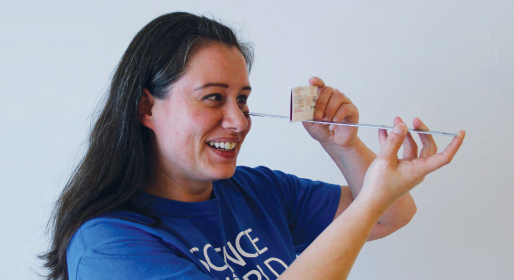Your eyes contain a lens that can stretch and squish to help focus light onto the retina, but it can only go so far! Find out how close up you can see and compare your results with your classmates.
Test Your Focus
Objectives
-
Demonstrate that your eyes have a focusing mechanism, and that mechanism has a limit
Materials
-
Rulers
Index cards with words printed on them (10 to 12 point font recommended)
Key Questions
- Share your results as a class. Calculate an average distance where the words on the card begin to blur. Look at a diagram or model of a human eye. Which parts help to focus light that enters the eyeball? How are your eyes able to focus on objects that are close up and far away?
What To Do
- Hold a ruler parallel to the ground and rest one end against one of your cheeks (as shown in the image below).
- Position the index card vertically at the end of the ruler that is farthest from your face. Slowly slide the card towards your eye until the words on the card start to become blurry. Look at the ruler and record the distance between your eye and the card.
- Repeat the investigation with your other eye. Did you get the same results?
- As a class, share your data and create a graph.

Extensions
- If you have classmates who wear glasses, have them try the experiment again without wearing their glasses. Do the words begin to blur when they are closer or farther away?